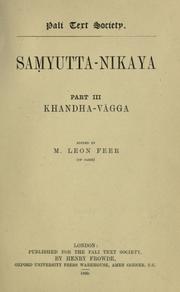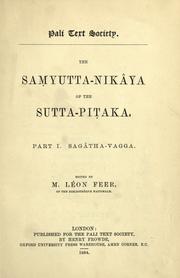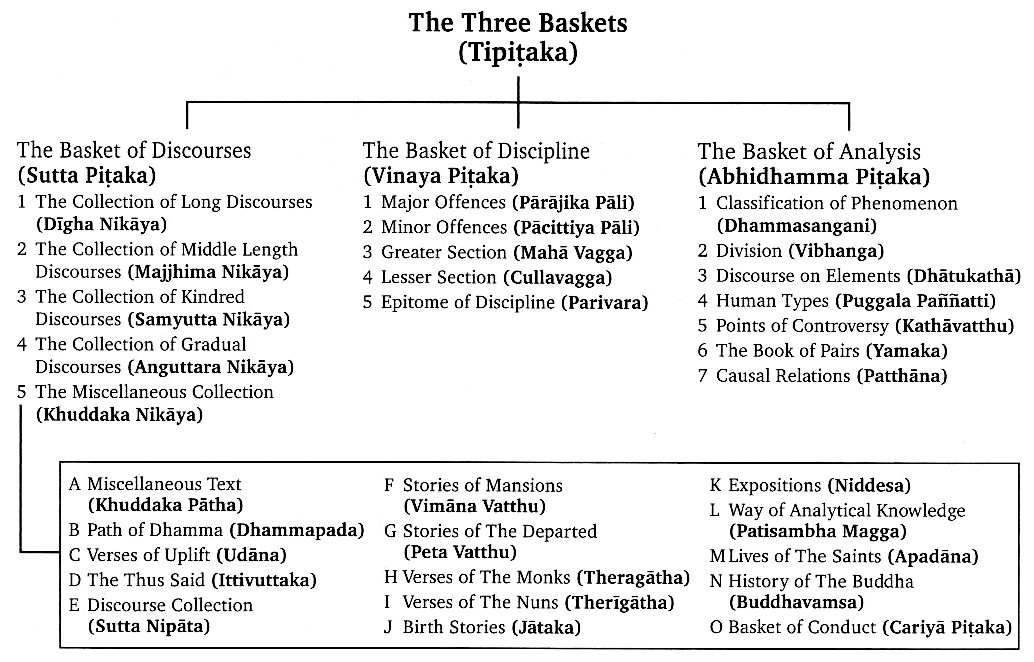ed One
|
Logout
My Courses
Resources
Community
About
Home
Thank you for registering with the Graduate Theological Union.
Our next session of Wisdom from World Religions will be taught August 13th, 2018 – September 21st, 2018.
You will be contacted shortly before the course launches with further instructions. Thank you!
My Courses Wisdom from World Religions Getting Started
https://wisdomfromworldreligions.com/my-courses
Awaken
Getting Started
12%
Start: Mon 23 Jul 2018
View More
About
the Course Until recently, the wisdom of the world’s many religions
existed in separate silos blocked from other traditions by barriers of
language, distance, and slow communications. Now, more than at any time
in history, this collective wisdom is…
The First Things To Do In The Course
What You’ll Learn in This Course
Orientation Video
Course Plan (Syllabus) Word Version
Daily Course Activities
FAQs and Troubleshooting Guide
Brought
to by a Generous Grant from the Templeton World Charity Foundation
(Executive Summary)
Pretest
©
2018 Kenneth Rose. Excluding quoted material from other copyrighted,
public domain, Creative Commons materials and proprietary material owned
by Accord LMS, Now You Know Media, the Templeton World Charity
Foundation, and the Graduate Theological Union. All rights reserved.
Permission
to include excerpts from Wisdom from World Religions: Pathways Toward
Heaven on Earth © 2002 Templeton Foundation Press has been granted by
the Templeton Foundation Press. All rights reserved.
The
Wisdom from World Religions global open online course is offered in
partnership with the Graduate Theological Union of Berkeley, California,
a unique multi-religious consortium for the graduate study of religion
featuring more than 20 member schools, centers, and institutes.
Sir
John Templeton and Wisdom from World Religions is a grant-funded
project from the Templeton World Charity Foundation. The opinions
expressed in this publication are those of the author(s) and do not
necessarily reflect the views of the Templeton World Charity Foundation,
Inc.
Copyright 2018 Kenneth Rose and Accord LMS | Privacy Statement | Terms Of Use
https://wisdomfromworldreligions.com/DesktopModules/Interzoic.AccordLMS/SCOLoader.aspx?LEID=5eeb618a-2a3d-4d06-9924-291d4cdbde67&FId=265cabb3-80fd-4942-b195-c1ba9b1db55d&MId=491&PortalId=0&TbId=119
About the Course
Until
recently, the wisdom of the world’s many religions existed in separate
silos blocked from other traditions by barriers of language, distance,
and slow communications. Now, more than at any time in history, this
collective wisdom is easily available to anyone with an internet
connection. But without a guide to this enormous wealth of information
and practice, we can quickly lose our way.
In this course,
comparative religionist Kenneth Rose will be your guide in learning
about and practicing the religious and spiritual wisdom that can change
your life and the life of your community. Taking his start from the
spiritual principles and practices outlined by noted investor and
spiritual teacher Sir John Templeton in his book Wisdom from World
Religions: Pathways Toward Heaven on Earth, Kenneth Rose will trace
these teachings to their sources in the world’s major religions and show
you how you can put them into practice.
What You’ll Learn
This course provides clear and inspiring answers to many of life’s big questions:
Does life have an ultimate meaning?
Is science the ultimate guide to the deepest truth of life?
Does God, or a divine reality, exist?
What practices can bring God, or a divine reality, into your own experience?
Is death the end of life?
Course Learning Objectives
After taking this course, participants should be able to:
Identify the basic teachings of the world’s major active religious traditions.
Distinguish the different religions from each other.
Compare these religions in search of commonalties and differences.
Evaluate Sir John’s contributions to the study of spirituality.
Apply some of the spiritual practices suggested by Sir John Templeton
Assess claims about spiritual realities made by the various religions.
https://wisdomfromworldreligions.com/my-courses
Awakened One
|
Logout
My Courses
Resources
Community
About
Home
Thank you for registering with the Graduate Theological Union.
Our next session of Wisdom from World Religions will be taught August 13th, 2018 – September 21st, 2018.
You will be contacted shortly before the course launches with further instructions. Thank you!
My Courses Wisdom from World Religions
Wisdom from World Religions
1%
Start: Mon 23 Jul 2018
View More
Until
quite recently, the wisdom of the world’s many religions existed in
separate silos barricaded from other traditions behind barriers of
language, distance, and slow communications. Now, more than any time in
history, this collective wisdom is easily …
Week 1
Getting Started
Day 1 (Monday): Wisdom from World Religions
Day 2 (Wednesday): The Divinity of the World: “God-life moving through all”
Day 3 (Friday): The Spiritual Anchor of the Material World
Week 2
Day 4 (Monday): Spiritual Pluralism
Day 5 (Wednesday): Spiritual Laws
Day 6 (Friday): Divine Intelligence and Creativity
Week 3
Day 7 (Monday): The Humble Approach
Day 8 (Wednesday): A Moral Wakeup Call
Day 9 (Friday): Expanding Spiritual Science and Research
Week 4
Day 10 (Monday): The Law of Mind Action
Day 11 (Wednesday): A Guiding Inner Power
Day 12 (Friday): An Attitude of Gratitude
Week 5
Day 13 (Monday): The Return on Generosity
Day 14 (Wednesday): The Movement of Forgiveness
Day 15 (Friday): Practicing Unlimited Love
Week 6
Day 16 (Monday): Forward into the Divine Unknown
Day 17 (Wednesday): The Mystic Power of Prayer
Day 18 (Friday): The Standpoint of Nonduality
©
2018 Kenneth Rose. Excluding quoted material from other copyrighted,
public domain, Creative Commons materials and proprietary material owned
by Accord LMS, Now You Know Media, the Templeton World Charity
Foundation, and the Graduate Theological Union. All rights reserved.
Permission
to include excerpts from Wisdom from World Religions: Pathways Toward
Heaven on Earth © 2002 Templeton Foundation Press has been granted by
the Templeton Foundation Press. All rights reserved.
The
Wisdom from World Religions global open online course is offered in
partnership with the Graduate Theological Union of Berkeley, California,
a unique multi-religious consortium for the graduate study of religion
featuring more than 20 member schools, centers, and institutes.
Sir
John Templeton and Wisdom from World Religions is a grant-funded
project from the Templeton World Charity Foundation. The opinions
expressed in this publication are those of the author(s) and do not
necessarily reflect the views of the Templeton World Charity Foundation,
Inc.
Copyright 2018 Kenneth Rose and Accord LMS | Privacy Statement | Terms Of Use
2718 Sun 19 Aug 2018 LESSON (59) Sun 19 Aug 2007
Do Good Be Mindful - Awakened One with Awareness (AOA)
Sunday 7 Hours Morning 9:30 am - 11:30 am Sutta (Discourse)
Thank you for registering with the Graduate Theological Union.
https://wisdomfromworldreligions.com/my-courses
Awakened One
|
Logout
My Courses
Resources
Community
About
Home
Thank you for registering with the Graduate Theological Union.
Our next session of Wisdom from World Religions will be taught August 13th, 2018 – September 21st, 2018.
You will be contacted shortly before the course launches with further instructions. Thank you!
My Courses Wisdom from World Religions Getting Started
Getting Started
12%
Start: Mon 23 Jul 2018
View More
About
the Course Until recently, the wisdom of the world’s many religions
existed in separate silos blocked from other traditions by barriers of
language, distance, and slow communications. Now, more than at any time
in history, this collective wisdom is…
The First Things To Do In The Course
What You’ll Learn in This Course
Orientation Video
Course Plan (Syllabus) Word Version
Daily Course Activities
FAQs and Troubleshooting Guide
Brought
to by a Generous Grant from the Templeton World Charity Foundation
(Executive Summary)
Pretest
©
2018 Kenneth Rose. Excluding quoted material from other copyrighted,
public domain, Creative Commons materials and proprietary material owned
by Accord LMS, Now You Know Media, the Templeton World Charity
Foundation, and the Graduate Theological Union. All rights reserved.
Permission
to include excerpts from Wisdom from World Religions: Pathways Toward
Heaven on Earth © 2002 Templeton Foundation Press has been granted by
the Templeton Foundation Press. All rights reserved.
The
Wisdom from World Religions global open online course is offered in
partnership with the Graduate Theological Union of Berkeley, California,
a unique multi-religious consortium for the graduate study of religion
featuring more than 20 member schools, centers, and institutes.
Sir
John Templeton and Wisdom from World Religions is a grant-funded
project from the Templeton World Charity Foundation. The opinions
expressed in this publication are those of the author(s) and do not
necessarily reflect the views of the Templeton World Charity Foundation,
Inc.
Copyright 2018 Kenneth Rose and Accord LMS | Privacy Statement | Terms Of Use
https://wisdomfromworldreligions.com/DesktopModules/Interzoic.AccordLMS/SCOLoader.aspx?LEID=5eeb618a-2a3d-4d06-9924-291d4cdbde67&FId=265cabb3-80fd-4942-b195-c1ba9b1db55d&MId=491&PortalId=0&TbId=119
About the Course
Until
recently, the wisdom of the world’s many religions existed in separate
silos blocked from other traditions by barriers of language, distance,
and slow communications. Now, more than at any time in history, this
collective wisdom is easily available to anyone with an internet
connection. But without a guide to this enormous wealth of information
and practice, we can quickly lose our way.
In this course,
comparative religionist Kenneth Rose will be your guide in learning
about and practicing the religious and spiritual wisdom that can change
your life and the life of your community. Taking his start from the
spiritual principles and practices outlined by noted investor and
spiritual teacher Sir John Templeton in his book Wisdom from World
Religions: Pathways Toward Heaven on Earth, Kenneth Rose will trace
these teachings to their sources in the world’s major religions and show
you how you can put them into practice.
What You’ll Learn
This course provides clear and inspiring answers to many of life’s big questions:
Does life have an ultimate meaning?
Is science the ultimate guide to the deepest truth of life?
Does God, or a divine reality, exist?
What practices can bring God, or a divine reality, into your own experience?
Is death the end of life?
Course Learning Objectives
After taking this course, participants should be able to:
Identify the basic teachings of the world’s major active religious traditions.
Distinguish the different religions from each other.
Compare these religions in search of commonalties and differences.
Evaluate Sir John’s contributions to the study of spirituality.
Apply some of the spiritual practices suggested by Sir John Templeton
Assess claims about spiritual realities made by the various religions.
https://wisdomfromworldreligions.com/my-courses
Awakened One
|
Logout
My Courses
Resources
Community
About
Home
Thank you for registering with the Graduate Theological Union.
Our next session of Wisdom from World Religions will be taught August 13th, 2018 – September 21st, 2018.
You will be contacted shortly before the course launches with further instructions. Thank you!
My Courses Wisdom from World Religions
Wisdom from World Religions
1%
Start: Mon 23 Jul 2018
View More
Until
quite recently, the wisdom of the world’s many religions existed in
separate silos barricaded from other traditions behind barriers of
language, distance, and slow communications. Now, more than any time in
history, this collective wisdom is easily …
Week 1
Getting Started
Day 1 (Monday): Wisdom from World Religions
Day 2 (Wednesday): The Divinity of the World: “God-life moving through all”
Day 3 (Friday): The Spiritual Anchor of the Material World
Week 2
Day 4 (Monday): Spiritual Pluralism
Day 5 (Wednesday): Spiritual Laws
Day 6 (Friday): Divine Intelligence and Creativity
Week 3
Day 7 (Monday): The Humble Approach
Day 8 (Wednesday): A Moral Wakeup Call
Day 9 (Friday): Expanding Spiritual Science and Research
Week 4
Day 10 (Monday): The Law of Mind Action
Day 11 (Wednesday): A Guiding Inner Power
Day 12 (Friday): An Attitude of Gratitude
Week 5
Day 13 (Monday): The Return on Generosity
Day 14 (Wednesday): The Movement of Forgiveness
Day 15 (Friday): Practicing Unlimited Love
Week 6
Day 16 (Monday): Forward into the Divine Unknown
Day 17 (Wednesday): The Mystic Power of Prayer
Day 18 (Friday): The Standpoint of Nonduality
©
2018 Kenneth Rose. Excluding quoted material from other copyrighted,
public domain, Creative Commons materials and proprietary material owned
by Accord LMS, Now You Know Media, the Templeton World Charity
Foundation, and the Graduate Theological Union. All rights reserved.
Permission
to include excerpts from Wisdom from World Religions: Pathways Toward
Heaven on Earth © 2002 Templeton Foundation Press has been granted by
the Templeton Foundation Press. All rights reserved.
The
Wisdom from World Religions global open online course is offered in
partnership with the Graduate Theological Union of Berkeley, California,
a unique multi-religious consortium for the graduate study of religion
featuring more than 20 member schools, centers, and institutes.
Sir
John Templeton and Wisdom from World Religions is a grant-funded
project from the Templeton World Charity Foundation. The opinions
expressed in this publication are those of the author(s) and do not
necessarily reflect the views of the Templeton World Charity Foundation,
Inc.
Copyright 2018 Kenneth Rose and Accord LMS | Privacy Statement | Terms Of Use
https://wisdomfromworldreligions.com/my-courses
Awakened One
|
Logout
My Courses
Resources
Community
About
Home
Thank you for registering with the Graduate Theological Union.
Our next session of Wisdom from World Religions will be taught August 13th, 2018 – September 21st, 2018.
You will be contacted shortly before the course launches with further instructions. Thank you!
My Courses
Wisdom from World Religions
©
2018 Kenneth Rose. Excluding quoted material from other copyrighted,
public domain, Creative Commons materials and proprietary material owned
by Accord LMS, Now You Know Media, the Templeton World Charity
Foundation, and the Graduate Theological Union. All rights reserved.
Permission
to include excerpts from Wisdom from World Religions: Pathways Toward
Heaven on Earth © 2002 Templeton Foundation Press has been granted by
the Templeton Foundation Press. All rights reserved.
The
Wisdom from World Religions global open online course is offered in
partnership with the Graduate Theological Union of Berkeley, California,
a unique multi-religious consortium for the graduate study of religion
featuring more than 20 member schools, centers, and institutes.
Sir
John Templeton and Wisdom from World Religions is a grant-funded
project from the Templeton World Charity Foundation. The opinions
expressed in this publication are those of the author(s) and do not
necessarily reflect the views of the Templeton World Charity Foundation,
Inc.
Copyright 2018 Kenneth Rose and Accord LMS | Privacy Statement | Terms Of Use
https://wisdomfromworldreligions.com/DesktopModules/Interzoic.AccordLMS/SCOLoader.aspx?LEID=5eeb618a-2a3d-4d06-9924-291d4cdbde67&FId=265cabb3-80fd-4942-b195-c1ba9b1db55d&MId=491&PortalId=0&TbId=119
About the Course
Until
recently, the wisdom of the world’s many religions existed in separate
silos blocked from other traditions by barriers of language, distance,
and slow communications. Now, more than at any time in history, this
collective wisdom is easily available to anyone with an internet
connection. But without a guide to this enormous wealth of information
and practice, we can quickly lose our way.
In this course,
comparative religionist Kenneth Rose will be your guide in learning
about and practicing the religious and spiritual wisdom that can change
your life and the life of your community. Taking his start from the
spiritual principles and practices outlined by noted investor and
spiritual teacher Sir John Templeton in his book Wisdom from World
Religions: Pathways Toward Heaven on Earth, Kenneth Rose will trace
these teachings to their sources in the world’s major religions and show
you how you can put them into practice.
What You’ll Learn
This course provides clear and inspiring answers to many of life’s big questions:
Does life have an ultimate meaning?
Is science the ultimate guide to the deepest truth of life?
Does God, or a divine reality, exist?
What practices can bring God, or a divine reality, into your own experience?
Is death the end of life?
Course Learning Objectives
After taking this course, participants should be able to:
Identify the basic teachings of the world’s major active religious traditions.
Distinguish the different religions from each other.
Compare these religions in search of commonalties and differences.
Evaluate Sir John’s contributions to the study of spirituality.
Apply some of the spiritual practices suggested by Sir John Templeton
Assess claims about spiritual realities made by the various religions.
https://wisdomfromworldreligions.com/my-courses
Thank you for registering with the Graduate Theological Union.
Our next session of Wisdom from World Religions will be taught August 13th, 2018 – September 21st, 2018.
You will be contacted shortly before the course launches with further instructions. Thank you!
My Courses Wisdom from World Religions Day 1 (Monday): Wisdom from World Religions
Day 1 (Monday): Wisdom from World Religions
0%
Start: Mon 23 Jul 2018
Click the Open button to the right to access today’s learning elements.
Unit
1 Study Guide: Sir John Templeton’s Wisdom from World Religions: The
Tapestry of World
Religions
Unit
1 Video: Sir John Templeton’s Wisdom from World Religions: The Tapestry
of World Religions
Unit
2 Study Guide: Introducing the Religions of the World: Sir John
Templeton and the Study of
Religion
Unit
2 Video: Introducing the Religions of the World: Sir John Templeton and
the Study of
Religion,
Unit
3 Study Guide: A Spiritual Practice from Sir John Templeton: Lifting
Your awareness to a Higher level of
Receptivity
Unit
3 Video: A Spiritual Practice from Sir John Templeton: Lifting Your
Awareness to a Higher Level of
Receptivity
Unit 4 Study Guide: Guest Lecture: Sir John Templeton on Science and Religion
Unit 4 Video 4: Guest Lecture: Sir John Templeton on Science and Religion
https://wisdomfromworldreligions.com/DesktopModules/Interzoic.AccordLMS/SCOLoader.aspx?LEID=5eeb618a-2a3d-4d06-9924-291d4cdbde67&FId=265cabb3-80fd-4942-b195-c1ba9b1db55d&MId=491&PortalId=0&TbId=119
About the Course
Until
recently, the wisdom of the world’s many religions existed in separate
silos blocked from other traditions by barriers of language, distance,
and slow communications. Now, more than at any time in history, this
collective wisdom is easily available to anyone with an internet
connection. But without a guide to this enormous wealth of information
and practice, we can quickly lose our way.
In this course,
comparative religionist Kenneth Rose will be your guide in learning
about and practicing the religious and spiritual wisdom that can change
your life and the life of your community. Taking his start from the
spiritual principles and practices outlined by noted investor and
spiritual teacher Sir John Templeton in his book Wisdom from World
Religions: Pathways Toward Heaven on Earth, Kenneth Rose will trace
these teachings to their sources in the world’s major religions and show
you how you can put them into practice.
What You’ll Learn
This course provides clear and inspiring answers to many of life’s big questions:
Does life have an ultimate meaning?
Is science the ultimate guide to the deepest truth of life?
Does God, or a divine reality, exist?
What practices can bring God, or a divine reality, into your own experience?
Is death the end of life?
Course Learning Objectives
After taking this course, participants should be able to:
Identify the basic teachings of the world’s major active religious traditions.
Distinguish the different religions from each other.
Compare these religions in search of commonalties and differences.
Evaluate Sir John’s contributions to the study of spirituality.
Apply some of the spiritual practices suggested by Sir John Templeton
Assess claims about spiritual realities made by the various religions.
https://wisdomfromworldreligions.com/DesktopModules/Interzoic.AccordLMS/SCOLoader.aspx?LEID=baed4430-b15c-4cd9-9296-e59b90798ffe&FId=6cb27ee6-c289-4a70-95d5-218eb9da98e7&MId=491&PortalId=0&TbId=119
Video 1: Sir John Templeton’s Wisdom from World Religions
Topic: The Tapestry of World Religions
A
Spiritual Law from Sir John Templeton: “The rich variety of world
religions creates a tapestry of amazing beauty—a testimony to the
spiritual nature of our human visit on earth” (WWR 56).
Video 1 Learning Objectives:
To get acquainted with Sir John Templeton’s Spiritual Vision
To
apply spiritual laws in order to become what Sir John Templeton calls
“a constructive participant in building ‘heaven on earth’” (WWR xix).
To employ the resources of the world’s religions to a personal quest for wisdom.
Readings and Selections
Suggested Reading in Wisdom from World Religions
xix-xxv
Discussion questions
Seekers
How many significant living religions of the world can you name?
What methods would you use to study the religions of the world?
Proficients
Can you group different current religious into two or three or more families of religions/
What critical and theoretical perspectives do you bring to bear on the study of religion?
Adepts
Do you think that spiritual practices and the study of religion belong together?
What
do you see as the strengths and weaknesses of the synthesis of
religious ideas and practices that John Templeton expresses in Wisdom
from World Religions?
Readings from Sir John Templeton’s Wisdom from World Religions
“The
rich variety of world religions creates a tapestry of amazing beauty—a
testimony to the essential spiritual nature of our human visit on earth.
And yet, within this amazing and sometimes fascinating diversity can be
found an equally amazing unity” (WWR 56).
“The more we know about
the universe and our place in it, the more we realize how little we
know. So, in our ongoing search, we often look to the spiritual
teachings of the world religions to provide assistance in helping us
understand more of who and what we are and why we are here.” (WWR 5)
“Wisdom
from World Religions: Pathways toward Heaven on Earth is designed to
offer people of all ages and all nations an opportunity to learn a
little more about the spiritual laws, principles, and teachings of a
variety of great spiritual practices. I hope that in this book we can
offer a Scripture verse or story or parable or discipline or quote that
may show you the world in a way more helpful than you have seen it
before. The materials presented in this book can provide an opportunity
for learning and “growing in wisdom.” There are clear scriptural and
philosophical bases for advocating the need for an inquiring and open
mind. . . . Can the value in learning to see a different world lie not
in replacing the one you have, but in providing a basis for an
opportunity to see from a different, or larger, perspective? Can the
timeless universal principles of life that transcend modern times or
particular cultures help people in all parts of the world live happier
and more useful lives?” (WWR xxi).
“The publishing of this book is
accomplished with reverence and appreciation for the world religions
that purify a person’s mind and heart, elevate his emotions, and offer
guidance for a spiritual way of life. Much of the material contained
herein has been made possible by the sincere light of the prophets,
teachers, and traditions of the world’s great religions that, through
the ages, have expressed sacred insights and wisdom to humanity” (WWR
xxv).































:max_bytes(150000):strip_icc()/happy-buddha-56a0c4fa5f9b58eba4b3aa25.jpg)
:max_bytes(150000):strip_icc()/left_rail_image_religion-58a22da268a0972917bfb5c9.png)























